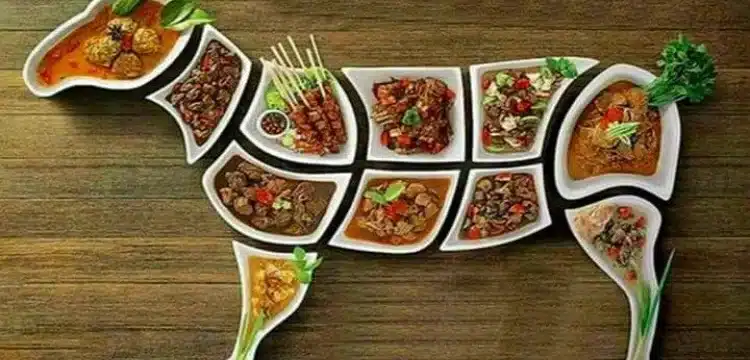As Eid ul Azha approaches, families around the world are preparing to celebrate with traditional feasts that blend cultural heritage with culinary delights. This festive occasion, also known as the Festival of Sacrifice, holds special significance for Muslims worldwide, marked by communal prayers, charitable acts, and the sacrifice of livestock. Central to the celebrations are the savory dishes prepared with skill and tradition passed down through generations.
Embracing Tradition: The Timeless Charms of Eid ul Azha Cuisine
Biryani
Traditional Eid ul Azha dishes are cherished for their rich flavors and cultural symbolism. Chief among these is the aromatic Biryani, a fragrant rice dish layered with tender pieces of marinated meat, infused with spices such as saffron, cardamom, and cumin.
Kebab
Accompanying the Biryani is the delectable Kebab, grilled to perfection and served with mint chutney, offering a savory complement to the festive spread.
Nihari
Another staple is the hearty Nihari, a slow-cooked stew of beef or mutton simmered overnight with spices until tender, served piping hot with naan bread. This dish not only exemplifies culinary expertise but also represents the warmth of family gatherings during Eid ul Azha.
Innovation in the Kitchen: Modern Twists on Eid ul Azha Classics
Biryani Pizza
While traditional dishes hold a special place, modern chefs and home cooks are increasingly experimenting with innovative twists to cater to evolving tastes and dietary preferences. A growing trend is the fusion of traditional flavors with contemporary techniques, resulting in dishes like Biryani Pizza, where the essence of Biryani is captured in a crispy crust topped with spiced meat and aromatic herbs.
Quinoa Kebabs
For health-conscious celebrants, lighter alternatives such as Quinoa Kebabs offer nutritious options without compromising on taste. These adaptations reflect a broader shift towards healthier eating habits while retaining the essence of Eid ul Azha’s culinary traditions.
Grilled Vegetable Skewers
Another modern twist includes Grilled Vegetable Skewers, which provide a fresh, colorful addition to the Eid table, appealing to both vegetarians and those looking to balance their meat intake.
Culinary Diversity: Global Influences on Eid ul Azha Menus
İskender Kebab (Turkey)
Beyond regional variations within countries, Eid ul Azha is celebrated worldwide with diverse culinary influences. In Turkey, for instance, the festival is marked by the iconic dish of İskender Kebab, layers of thinly sliced lamb over pita bread soaked in yogurt and tomato sauce, highlighting the country’s rich culinary heritage.
Haleem (South Asia)
In South Asia, the festive menu may include Haleem, a slow-cooked porridge-like dish of wheat, barley, and meat, enriched with aromatic spices and garnished with fried onions and lemon. Such variations underscore the global reach of Eid ul Azha and the rich tapestry of flavors that unite Muslim communities in celebration.
Preserving Tradition, Embracing Innovation
As families gather to celebrate Eid ul Azha, the debate between traditional and innovative dishes continues to enrich the culinary landscape. While some adhere faithfully to time-honored recipes passed down through generations, others embrace experimentation, blending old and new to create memorable dining experiences.
Ultimately, whether savoring a classic Biryani or indulging in a modern reinterpretation, Eid ul Azha remains a time for joyous feasting, sharing, and reflection, bridging cultural divides through the universal language of food.
In conclusion, as Eid ul Azha approaches, the diversity of dishes prepared across the globe reflects not only culinary creativity but also a celebration of cultural heritage and community spirit.











